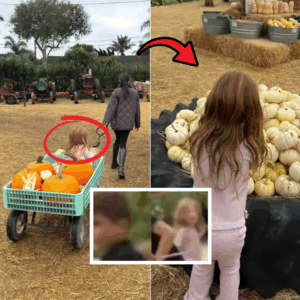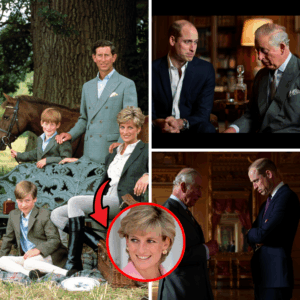In a moment that has set both Swifties and The Handmaid’s Tale fans abuzz, Elisabeth Moss, the Emmy-winning star and executive producer of the Hulu dystopian drama, achieved a personal and professional milestone by securing Taylor Swift’s re-recorded “Look What You Made Me Do (Taylor’s Version)” for the show’s sixth and final season. The song, featured in episode nine, titled “Execution,” aired in May 2025, and its inclusion has been hailed as a masterstroke that amplifies the episode’s intense uprising scene. Moss, a self-professed Taylor Swift fan, revealed that this collaboration was years in the making, culminating in a heartfelt letter she wrote to Swift, detailing the song’s significance to the narrative and its emotional resonance with the cast. This landmark moment not only underscores the synergy between music and storytelling but also highlights the power of authentic fandom in shaping creative decisions.
A Dream Years in the Making
For Elisabeth Moss, incorporating a Taylor Swift song into The Handmaid’s Tale was a long-cherished ambition. The series, adapted from Margaret Atwood’s 1985 novel, portrays a dystopian future where a totalitarian regime subjugates women, forcing fertile women like Moss’s character, June Osborne, into reproductive servitude. Over its six seasons, the show has been lauded for its unflinching exploration of resistance, resilience, and rebellion. Moss, who has not only starred as June but also directed several episodes and served as an executive producer, saw Swift’s music as a natural fit for the show’s themes of empowerment and defiance.

The opportunity to feature Swift’s music came to fruition in the penultimate episode of the series’ final season. Episode nine, “Execution,” marks a pivotal moment in the narrative, where June leads a group of handmaids in a coordinated rebellion against the oppressive Gilead regime. The scene is charged with tension and catharsis, as the women, clad in their iconic red robes, march with purpose, evading capture while explosions erupt in the background. To underscore this moment, Moss and her team sought a song that could capture the raw emotion and revolutionary spirit of the sequence. Enter “Look What You Made Me Do (Taylor’s Version),” a track from Swift’s forthcoming re-recorded album Reputation (Taylor’s Version).
The Power of a Personal Letter
Convincing a global superstar like Taylor Swift to allow her music in a television series is no small feat, especially for a re-recorded track that has yet to be officially released. Moss took a personal approach, crafting a letter to Swift that outlined not only the song’s narrative significance but also its personal impact on her and the The Handmaid’s Tale cast. In the letter, Moss expressed her admiration for Swift’s artistry and explained how “Look What You Made Me Do” encapsulated the episode’s themes of reclaiming power and confronting oppression. She also highlighted the shared fandom among the cast, noting that many, including co-star Yvonne Strahovski, are avid Swift fans.
The letter struck a chord with Swift, who granted permission for the song’s use. Moss later described Swift’s approval as a profound honor, emphasizing the authenticity of the collaboration. The decision to feature the re-recorded version of the song, part of Swift’s ongoing effort to reclaim ownership of her master recordings, added an extra layer of meaning. Just as June and the handmaids fight to reclaim their autonomy in The Handmaid’s Tale, Swift’s re-recording project represents her own battle for creative control, making the song’s inclusion a poetic parallel to the show’s narrative.
A Perfect Pairing
The selection of “Look What You Made Me Do” was not a random choice but the result of careful consideration by Moss and her editing team, particularly editor Wendy Hallam Martin. Moss had expressed a desire to include a Swift track in one of the final two episodes of the series, specifically for a powerful opening sequence. Hallam Martin, tasked with finding the right musical cue, tested multiple songs before landing on “Look What You Made Me Do.” The track’s pulsating synths, defiant lyrics, and dramatic energy aligned seamlessly with the visuals of June leading the handmaids through a chaotic escape, with bombs detonating and sirens blaring.
The song plays for over two minutes, covering the first and second verses and two choruses, creating an immersive experience that draws viewers into the intensity of the moment. The lyrics, with lines like “I got smarter, I got harder in the nick of time,” resonate deeply with June’s transformation from a victim of Gilead’s oppression to a fearless leader of the resistance. The re-recorded version, featuring updated vocals and production, brings a fresh yet familiar energy, enhancing the scene’s emotional weight. Hallam Martin described the pairing as almost serendipitous, noting that the song’s rhythm and thematic elements aligned perfectly with the sequence’s editing points.
A Cast of Swifties
The inclusion of Swift’s song was a celebratory moment for the The Handmaid’s Tale cast, many of whom identify as Swifties. Moss, who attended Swift’s Eras Tour in Toronto in November 2024 alongside co-star Bradley Whitford, has been vocal about her admiration for the pop icon. The cast’s shared enthusiasm for Swift’s music fostered a sense of camaraderie, making the song’s feature a personal triumph for the team. Moss emphasized that the collaboration felt like a tribute to Swift’s influence, not only as an artist but as a cultural figure who champions resilience and self-empowerment—qualities that mirror the spirit of the show’s characters.

The song’s placement also resonated with fans, who took to social media to express their excitement. The synergy between Swift’s music and the show’s narrative sparked discussions about the parallels between Swift’s personal journey and the handmaids’ fight for freedom. For many, the use of a Taylor’s Version track was a nod to Swift’s own rebellion against those who sought to control her work, further amplifying the episode’s themes.
The Broader Context
The decision to feature “Look What You Made Me Do (Taylor’s Version)” comes at a time when Swift’s re-recording project is a focal point for her fanbase. Originally released in 2017 as the lead single from her Reputation album, the song marked a bold shift in Swift’s public persona, addressing betrayal and reinvention. The re-recorded version, part of Swift’s mission to regain ownership of her first six albums, has been eagerly anticipated by fans, with snippets previously teased in other media, such as Amazon’s Wilderness in 2023. Its prominent placement in The Handmaid’s Tale has fueled speculation about the imminent release of Reputation (Taylor’s Version), with some fans pointing to Swift’s upcoming appearance at the American Music Awards in May 2025 as a potential announcement date.
For The Handmaid’s Tale, the song’s inclusion marks a high note in the series’ final season, which has been praised for its bold storytelling and emotional depth. Episode nine, directed by Moss herself, is a turning point in the narrative, delivering shocking twists and cathartic moments that set the stage for the series finale on May 27, 2025. The use of Swift’s song elevates the episode’s impact, creating a memorable moment that bridges music, television, and cultural commentary.
A Lasting Impact
The collaboration between Elisabeth Moss and Taylor Swift is more than a creative win for The Handmaid’s Tale—it’s a testament to the power of authentic storytelling and shared artistic vision. Moss’s heartfelt letter, the cast’s fandom, and the meticulous work of the editing team culminated in a scene that resonates with audiences on multiple levels. The song’s defiant energy, paired with the visual of June and the handmaids reclaiming their agency, creates a powerful narrative synergy that will likely be remembered as one of the series’ defining moments.
As The Handmaid’s Tale concludes its eight-year run, the inclusion of “Look What You Made Me Do (Taylor’s Version)” serves as a fitting tribute to the show’s legacy of highlighting resistance and resilience. For Moss, it’s the realization of a dream that blends her professional passion with her personal admiration for Swift. For fans, it’s a thrilling convergence of two cultural powerhouses, sparking conversations that extend beyond the screen. This collaboration underscores the enduring impact of music and storytelling in amplifying messages of empowerment and defiance, leaving a lasting impression as the series bids farewell.


